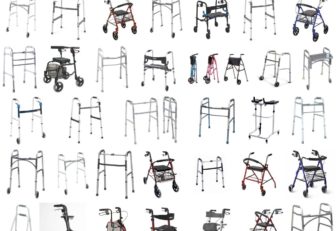
It’s easy to bet against New York State adopting single-payer healthcare. Sure, the state Assembly passed a law creating a single-payer system in May by a solid majority. But it also did so in previous years, including as far back as 1992, and that was four governors, one attempted HillaryCare and an ObamaCare ago. For decades, it seems, millions of Americans have embraced the concept of single payer only to see private insurance companies gain an even stronger grip on the healthcare steering wheel. The state Senate didn’t take up the bill this year and doesn’t seem likely to in 2019 either.
But what if 2018 is different? What if the combination of a leftward tilt in Democratic primaries and a potential blue wave in November populate the state legislature (and maybe even the governor’s mansion) with single-payer adherents? Will the proposed new system address all the medical needs of the Empire State?
“Eh, no,” was the answer given Monday by the New York Caring Majority Coalition, a partnership of groups like the Statewide Senior Action Council, Jews for Racial and Economic Justice and the National Domestic Workers Project that says it advocates for “seniors, people with disabilities, family caregivers, and domestic and home care workers.”
“To be truly universal,” reads a white paper released by the group, the single-payer system “must also include a new long-term care benefit that meets the needs of older adults and people with disabilities.”
According to an economic analysis of the current single-payer bill, known as the New York Health Act, the legislation would use progressive income and payroll taxes to fund “finance medically necessary care including hospitalization, doctor visits, dental, vision, mental/behavioral health, prescribed occupational and physical therapy, prescription drugs, medical devices, and rehabilitative care.” But it would only cover short-term rehabilitative care, not long-term (for instance, nursing-home) care. The bill would set long-term care aside to be addressed by a separate plan issued within two years of single-payer passage.
The Caring Majority notes that people who retire at age 65 today can expect to live until 82 for men and nearly 87 for women, but 70 percent of people will need some kind of long-term care, which at $100,000 or more a year almost no one can afford. So, most families rely on Medicaid, which families must “impoverish” themselves to qualify for. This system is hard on those needing care, on the (mostly female) caregivers who often have to step in to care for parents or spouses when professional care is out of financial reach, and on workers in a system where wages sometimes lag.
Hence the white paper’s call for “single-payer health care that guarantees long-term care to aging New Yorkers and people with disabilities by increasing access to services in their own homes and communities,” along with tools to address the hardships faced by caregivers and to pay living wages in the long-term care sector.
“In the realm of long-term support and services, the issue at hand is not whether or not to provide needed care and support for aging adults and people with disabilities,” the paper reads. “The only choice is between meeting those needs with a strategic investment in New York families and caregivers, or asking those families and caregivers to continue to shoulder the cost of care on their own.”
Read the paper below. On the one hand, given the enormous political lift that would be involved in passing single-payer, adding long-term care to the mix seems very risky. On the other, a plan that addressed the enormous anxieties of families with open-ended, full-time care needs could win some powerful allies.









One thought on “Sensing ‘Single Payer’ is Possible, a Call to Include Long-Term Care”
If you want the New York Health Act to pass the Senate, as my research has shown, one needs to get out and form relationships with white rural areas voters, which is a process that progressive organizations don’t seem to want to invest in. This would stand in good stead on other issues as well. It is absurd that single payer organizations continue the status quo of lobbying the NYS Senate. The constituency that votes for these senators is the one that has to lobby them. Why should the Republicans take a chance on giving up their seats? But I have been told, “We are not interested in working on your issue”. Or “Go work for the Poor People’s Campaign.” We are missing an important opportunity to listen and bring this group of people into the discussion. They have been forsaken by the Democrats and the Progressives only want them as clients. I have given up working with people in the single payer movement. There is no point. They want to stay in their box. I have designed a storytelling workshop and moral questions that can be used to change the direction of conversation.